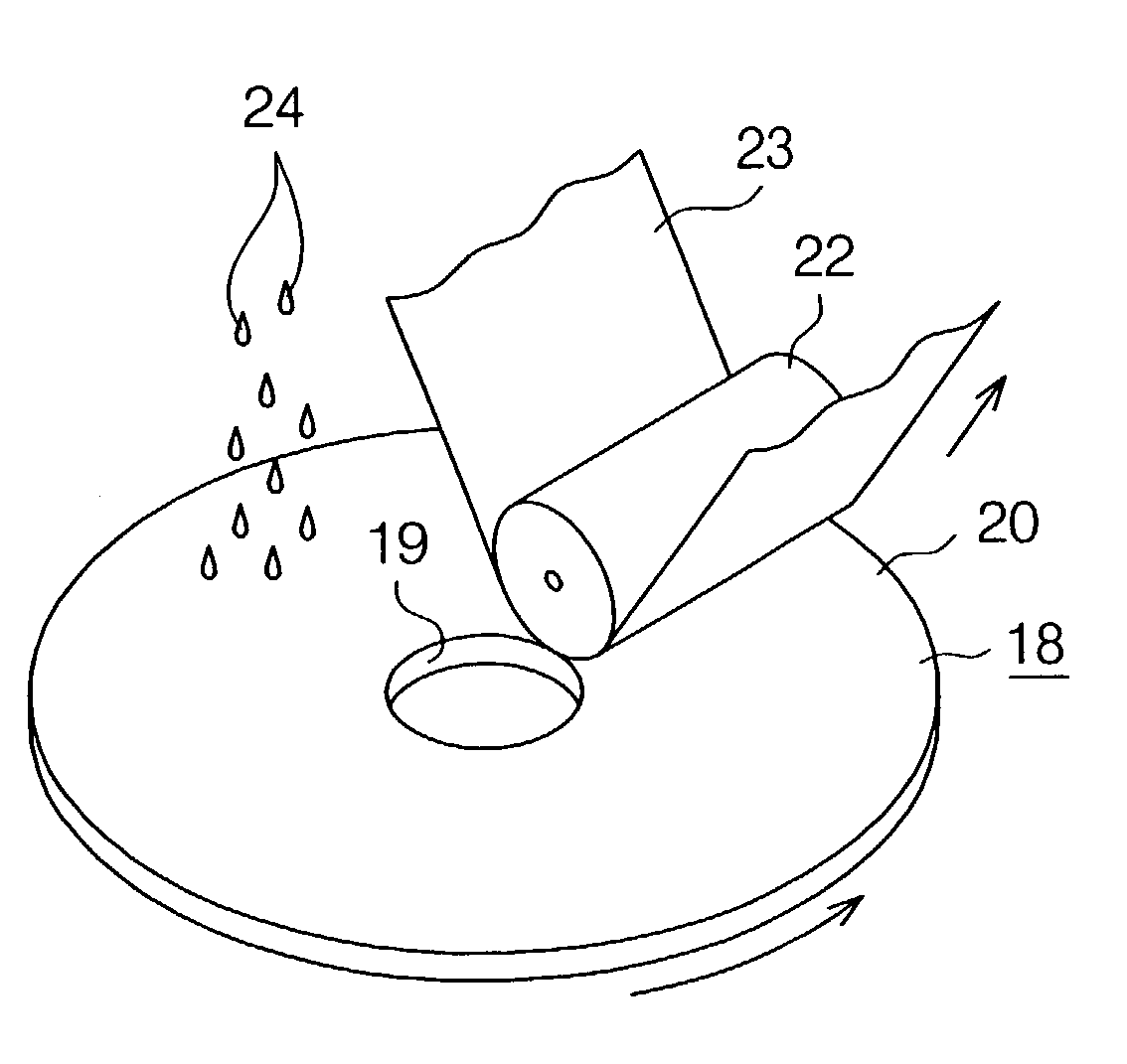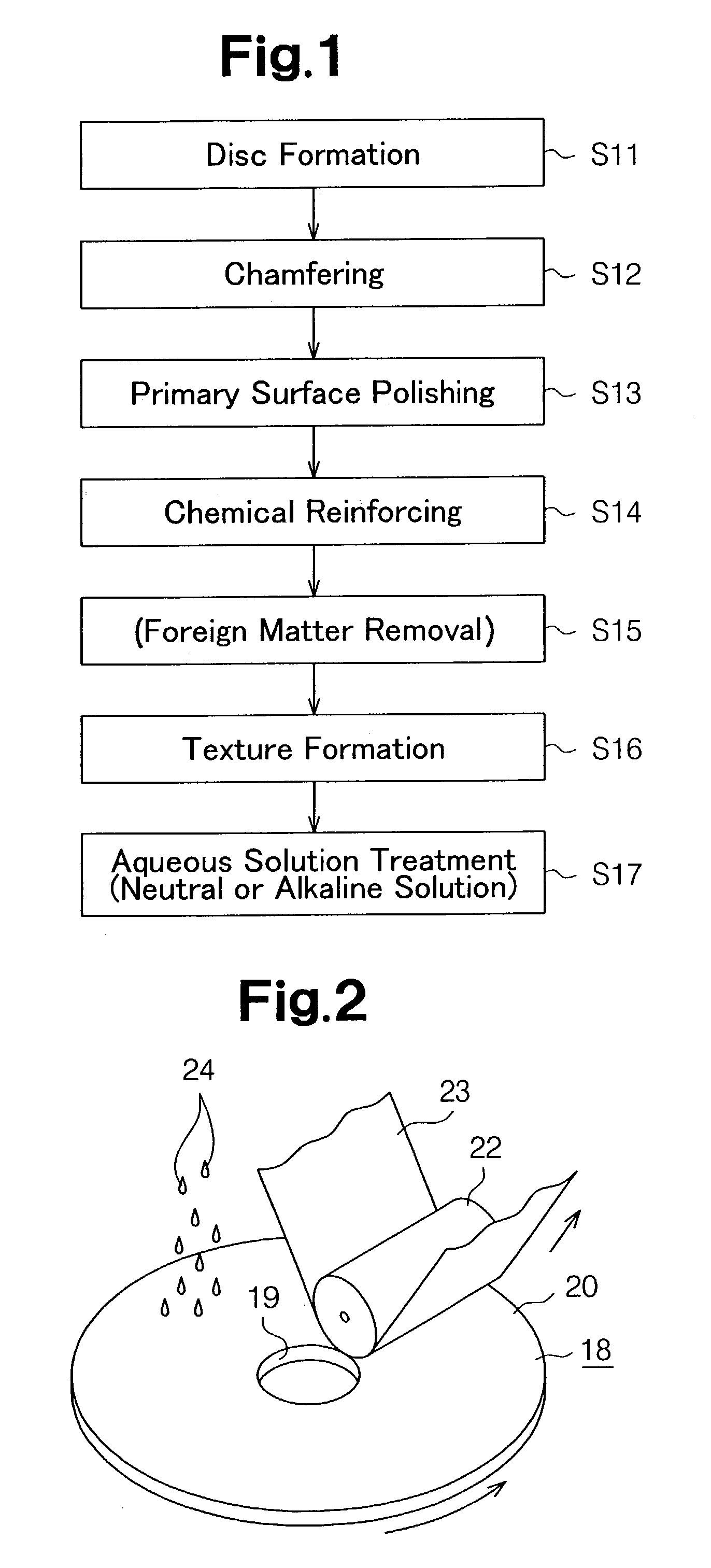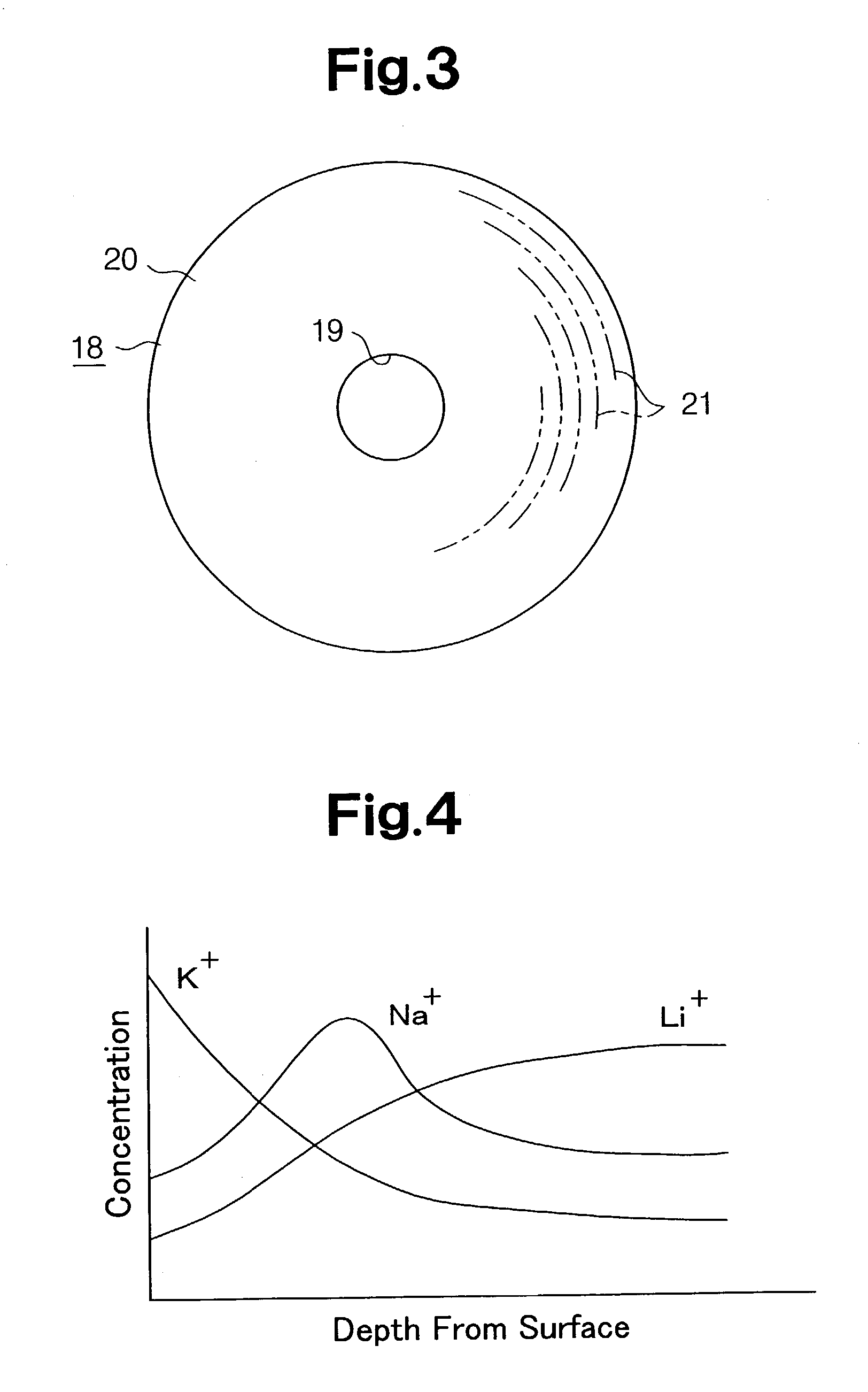Method for manufacturing glass substrate of information recording medium
a technology of information recording medium and glass substrate, which is applied in the direction of recording layer base layer, chemistry apparatus and processes, cleaning using liquids, etc., can solve the problem that the stably read recording magnetic data cannot be achieved by a magnetic head with high accuracy, and achieve the effect of stable textur
- Summary
- Abstract
- Description
- Claims
- Application Information
AI Technical Summary
Benefits of technology
Problems solved by technology
Method used
Image
Examples
example 1
[0088]Aluminosilicate glass having the composition below was shaped into a disc form having a thickness of 0.6 mm, an outer diameter of 65 mm, and an inner diameter of 20 mm.
[0089]
SiO2:63 mol %Al2O3:16 mol %Na2O:11 mol %Li2O: 4 mol %MgO: 2 mol %CaO: 4 mol %
[0090]The inner periphery surface and outer periphery surface of the glass substrate were chamfered. The primary surface of the glass substrate was subjected to lapping polish and smoothing polish. In the smoothing polish, both surfaces of the glass substrate were polished using an abrasive material comprising cerium oxide and an abrasive pad having an Asker C hardness of 70.
[0091]The abrasive powder adhered to the surface of the glass substrate was removed by sponge cleaning using polyvinyl alcohol and ultrasonic cleaning using a strongly alkaline solution. The glass substrate was rinsed with pure water. The resultant glass substrate was dried in isopropyl alcohol vapor for one minute.
[0092]The glass substrate was immersed for 90...
example 2
[0097]Substantially the same procedure as in Example 1 was repeated except that a texture was formed in a removing depth of 4 nm. A glass substrate from which an alkali in only a very small amount oozed was obtained. Results were good such that the texture had a linear density of 9,500 (lines / mm) and the maximum height Rmax is 8.5 (nm).
example 3
[0098]Substantially the same procedure as in Example 1 was repeated except that a texture was formed in a removing depth of 7 nm. A glass substrate from which an alkali in only a small amount oozed was obtained. Results were good such that the texture had a linear density of 9,500 (lines / mm) and the maximum height Rmax of 9.3 (nm).
PUM
| Property | Measurement | Unit |
|---|---|---|
| depth | aaaaa | aaaaa |
| average depth | aaaaa | aaaaa |
| thickness | aaaaa | aaaaa |
Abstract
Description
Claims
Application Information
 Login to View More
Login to View More - R&D
- Intellectual Property
- Life Sciences
- Materials
- Tech Scout
- Unparalleled Data Quality
- Higher Quality Content
- 60% Fewer Hallucinations
Browse by: Latest US Patents, China's latest patents, Technical Efficacy Thesaurus, Application Domain, Technology Topic, Popular Technical Reports.
© 2025 PatSnap. All rights reserved.Legal|Privacy policy|Modern Slavery Act Transparency Statement|Sitemap|About US| Contact US: help@patsnap.com



